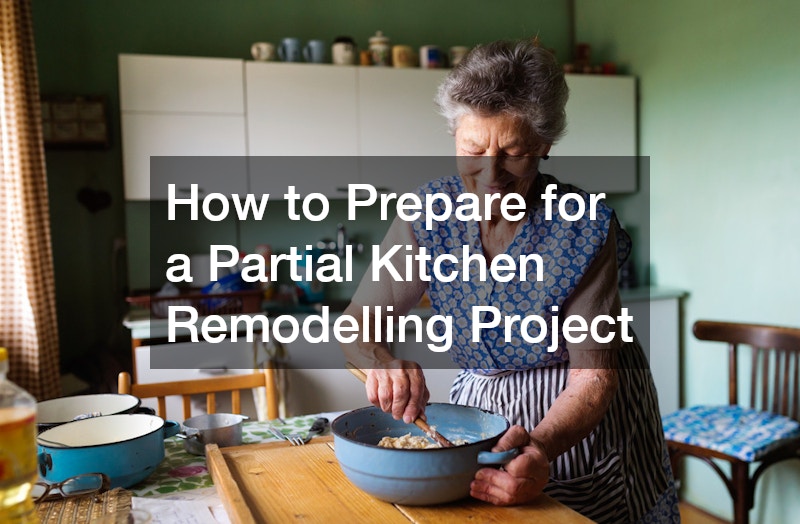A partial kitchen renovation is an excellent way to enhance your home without exceeding your budget. Proper planning is key to a successful kitchen renovation, whether your goal is to improve functionality or update the aesthetics. This comprehensive guide will take you through the essential steps for a partial kitchen renovation.
Define Your Goals and Budget
Before starting any renovation project, it’s important to set clear and realistic goals. Consider what you’d like to change in your kitchen, such as the layout, appliances, or design. Decide how much you’re willing to spend on the project, ensuring your vision aligns with your budget.
Research various renovation companies to get an estimate of the costs involved. Compare multiple quotes to find the one that best suits your needs. Prioritise your goals, bearing in mind that high-quality work often comes at a higher price.
By setting clear objectives and establishing a budget upfront, you can avoid costly surprises. Ensure your contractor understands your expectations so your vision can be achieved within your financial limits.
Research for Inspiration
Gather inspiration to help you visualise the final outcome of your partial kitchen renovation. Explore design magazines, websites, and social media for ideas on colour schemes, layouts, and materials. Create a mood board or Pinterest collection of your favourite design elements to share with your contractor.
Discuss your ideas with a kitchen renovation firm, seeking feedback on what is achievable within your budget and space. Request samples of finishes and materials to make informed decisions. Professionals can also suggest improvements to enhance the look and functionality of your kitchen.
Visiting showrooms and attending home renovation expos can provide insights into the latest trends and technologies in kitchen design. Keep an eye out for innovative features that could elevate your kitchen renovation and improve your cooking experience.
Choose Your Renovation Style
Selecting a style that complements your home’s design and suits your personal taste is crucial. Whether you prefer traditional, modern, or eclectic styles, choose elements that reflect your personality and lifestyle. Work with your contractor to ensure the style is cohesive with the rest of your home.
Consider your home’s layout and explore ways to optimise it for better functionality and flow. Experiment with different cabinetry materials, lighting fixtures, and benchtop options. You might also consider bespoke features like a pantry, custom cabinetry, recessed lighting, or integrated appliances.
Opt for timeless designs rather than fleeting trends to ensure your kitchen remains stylish for years to come. Consult with renovation experts to craft a design that aligns with your preferences and lifestyle.
Establish a Timeline
Once you’ve defined your goals, budget, and style, it’s time to establish a realistic timeline for the renovation. Work with your contractor to create a schedule that accounts for potential delays or challenges. Flexibility and patience are essential during the renovation process.
Consider factors such as material lead times, contractor availability, and appliance deliveries when planning your timeline. Regularly communicate with your contractor to monitor progress and address any issues. Setting milestones can help keep the project on track.
A well-thought-out timeline will manage your expectations and minimise disruptions to your daily routine. Prepare for temporary inconveniences like limited kitchen access to maintain a sense of normality.
Plan Temporary Cooking Solutions
To minimise disruptions during your kitchen renovation, plan temporary cooking solutions. Set up a makeshift kitchen in another part of your home with essentials such as a microwave, electric kettle, and toaster. Stock up on non-perishable foods and disposable dishware to simplify meal preparation.
Coordinate with your contractor to find the best location for your temporary kitchen and ensure access to electricity and water. Consider dining out or ordering takeaway occasionally to reduce stress and enjoy a break from cooking.
Stay organised and maintain a positive attitude throughout the renovation process. Keep essential kitchen tools handy to make the temporary setup as functional as possible.
Clear the Kitchen Area
Prepare for your renovation by clearing out all clutter and unnecessary items from your kitchen. This creates a clean workspace for contractors and protects your belongings from damage. Pack away fragile items and remove contents from drawers, cupboards, and benchtops.
Donate or discard items you no longer need and store essentials in easily accessible containers. Thoroughly clean the cleared space before work begins to ensure a fresh start for your renovation.
Maintaining a tidy and organised space throughout the renovation will help create a calm and efficient environment.
Communicate Effectively with Contractors

Clear communication is essential for a successful kitchen renovation. Set expectations regarding timelines, budgets, and design preferences upfront. Regularly check in with your contractor to monitor progress, discuss concerns, and make decisions.
Promptly communicate any changes to the plan to avoid delays. Stay informed about project milestones and collaborate on creative solutions to any challenges.
Building a positive rapport with your contractor through open and honest communication will contribute to a satisfying outcome.
Protect Surrounding Areas
Protecting the surrounding areas during your kitchen renovation is crucial to prevent damage and maintain a clean workspace. Use plastic sheeting or tarps to contain dust and debris, and safeguard floors, furniture, and fixtures from wear and tear.
Discuss protective measures with your contractor to ensure your property and belongings are secure throughout the renovation process.
Update Utilities if Needed
During a partial kitchen renovation, it may be necessary to update utilities such as plumbing, electrical systems, or ventilation. Consult licensed professionals to assess and upgrade utilities as required, ensuring compliance with local regulations and standards.
Investing in high-quality materials and craftsmanship will improve the functionality and efficiency of your kitchen, creating a safer and more comfortable space.
Budget for Unexpected Costs
Prepare for unexpected costs by allocating 10–20% of your budget for unforeseen challenges, such as structural repairs or additional permits. Discuss potential risks with your contractor and create a plan to address them proactively.
Staying flexible and monitoring expenses closely will help you navigate challenges while keeping your project on track.
A partial kitchen renovation requires careful planning, collaboration, and communication. By defining your goals, setting a budget, and maintaining clear communication with your contractor, you can achieve a seamless and successful renovation. Follow these steps to create a kitchen that enhances your home’s beauty and functionality.
